Teaching our kids about the importance of taking care of our planet is one of the most important things we can do as parents. It may sound overwhelming or intimidating, but there are lots of easy and simple ways to get kids involved in sustainability actions and thinking about our planet. Today, Army vet, RN, and Florida mom of two, Lea Reynolds is here to show parents how easy it can be to lead by example by making eco-conscious choices. She’s included great advice on how to get kids involved in the process, as well as 60+ eco-friendly actions for kids and fun ways to get kids excited about sustainability.
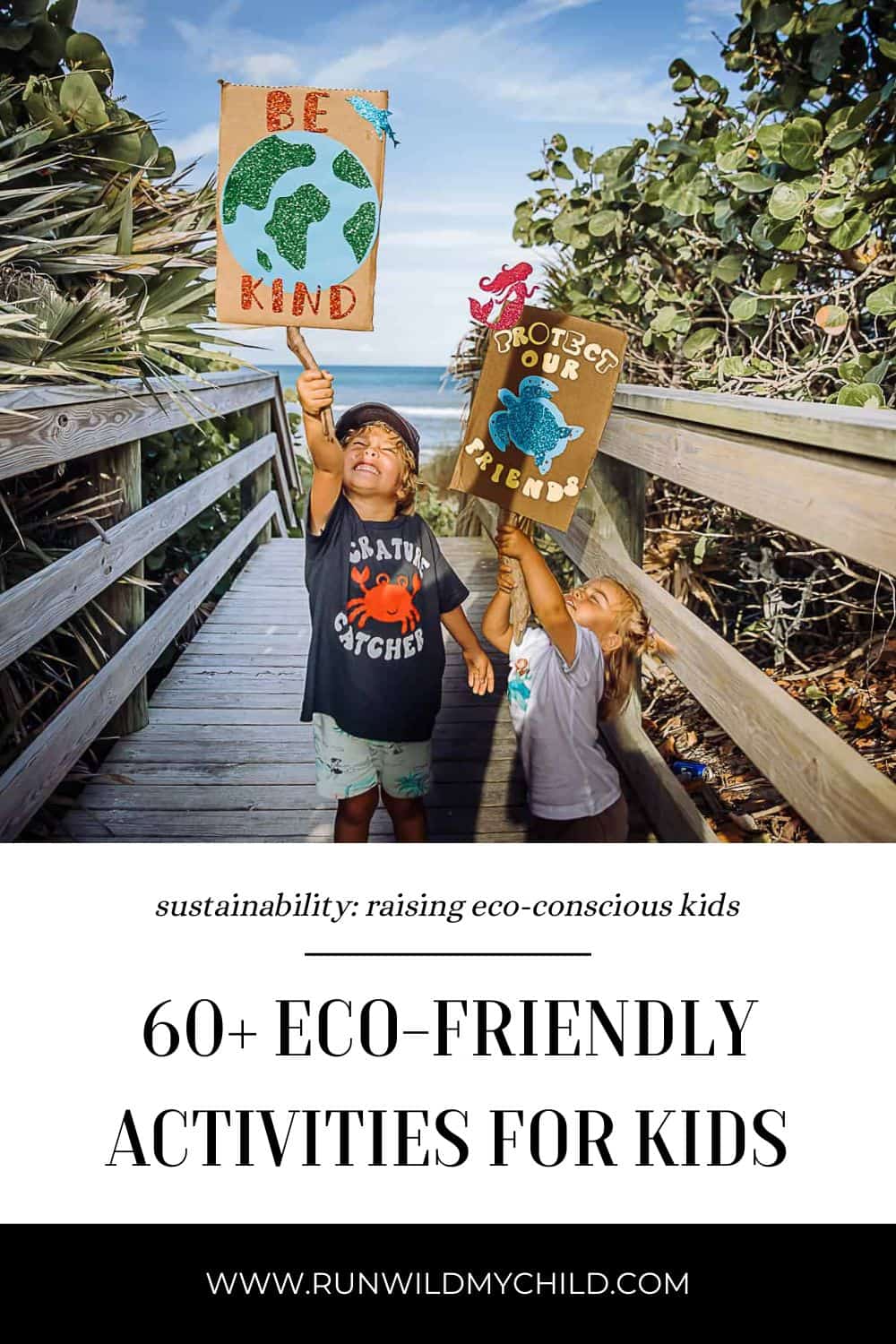
Every day is Earth Day
Earth Day is an annual event celebrated on April 22nd that aims to raise awareness about environmental issues and promote actions that help protect the planet. Earth Day is the largest secular holiday in the world, with more than 500 million people taking part in 174 countries around the world.
While Earth Day can provide an opportunity for people to learn about the causes and impacts of climate change, it’s not the only day to take action to reduce our carbon footprint and promote sustainable practices. Action needs to start with us and with teaching/showing the next generation how to protect the world they will grow up in.
We strongly belive that our incredible planet should be celebrated every day – not just one day a year. We hope this post will encourage you to choose to honor, protect, and preserve our planet throughout the year with your actions and teachings. We’ll show you how!
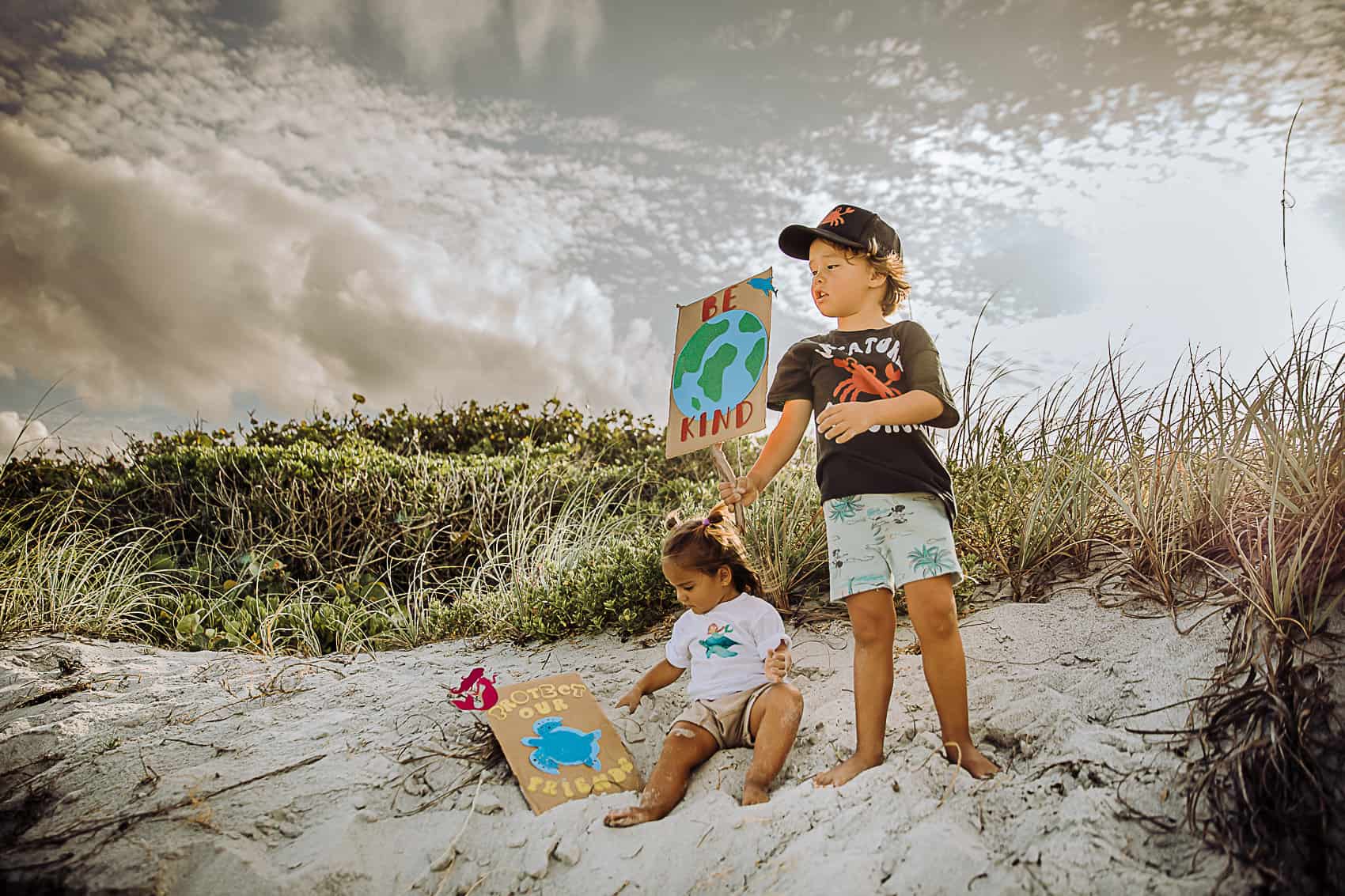
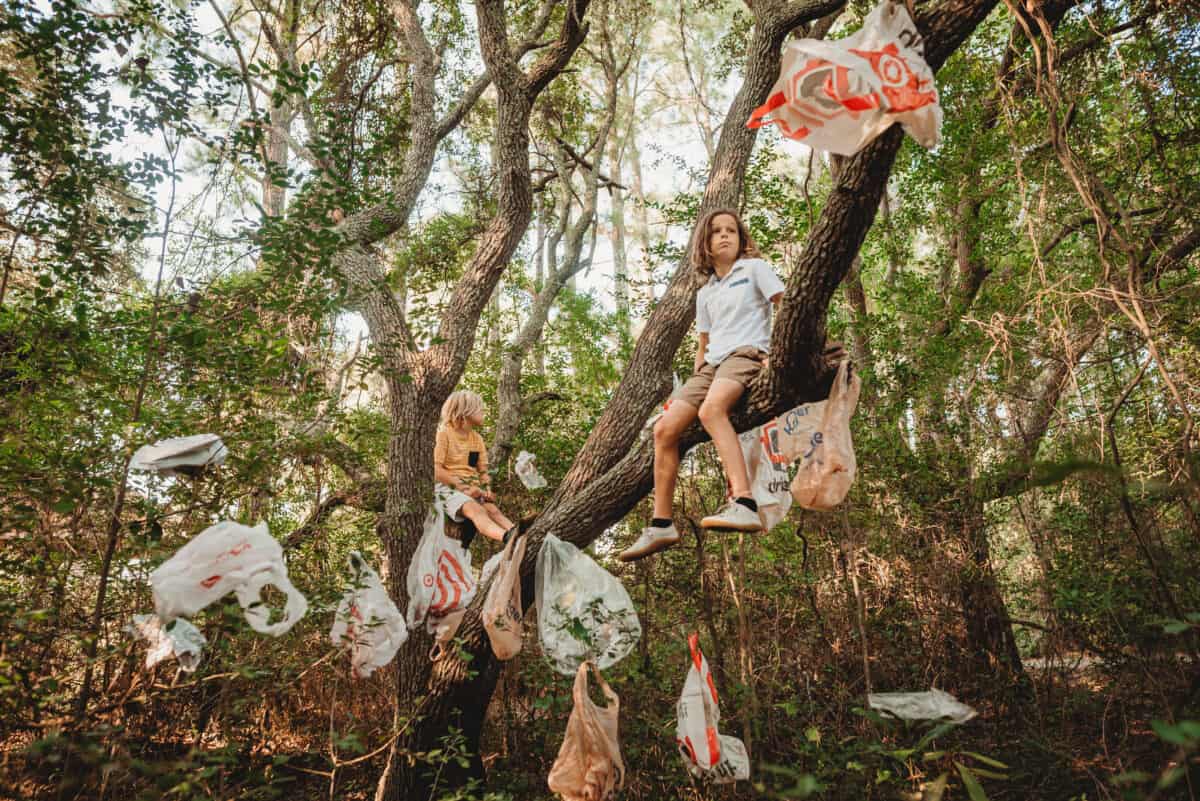 Photo credit: @dimples.and.the.blonde
Photo credit: @dimples.and.the.blonde
Get children involved in the process
Kids naturally want to be involved in the things we (their parents) are passionate about. Give your kids the opportunity to participate in your eco-friendly actions and help make decisions on sustainable changes for your home and life. Getting your child on board from an early age teaches them so many valuable lessons and makes eco-conscious decision-making second nature.
It’s never too early to start talking about sustainability with your children. Adults don’t give kids enough credit – they understand more than we often realize. When your child is stuck in a cycle of “I want,” it’s much easier to transition out of it when they realize the impact all those “wants” have on our planet. The more time we spend discussing how our actions can impact the world around us, the more our children will learn. Then we’ll have a whole generation of environmental thinkers and activists coming up after us…how wonderful would that be?!
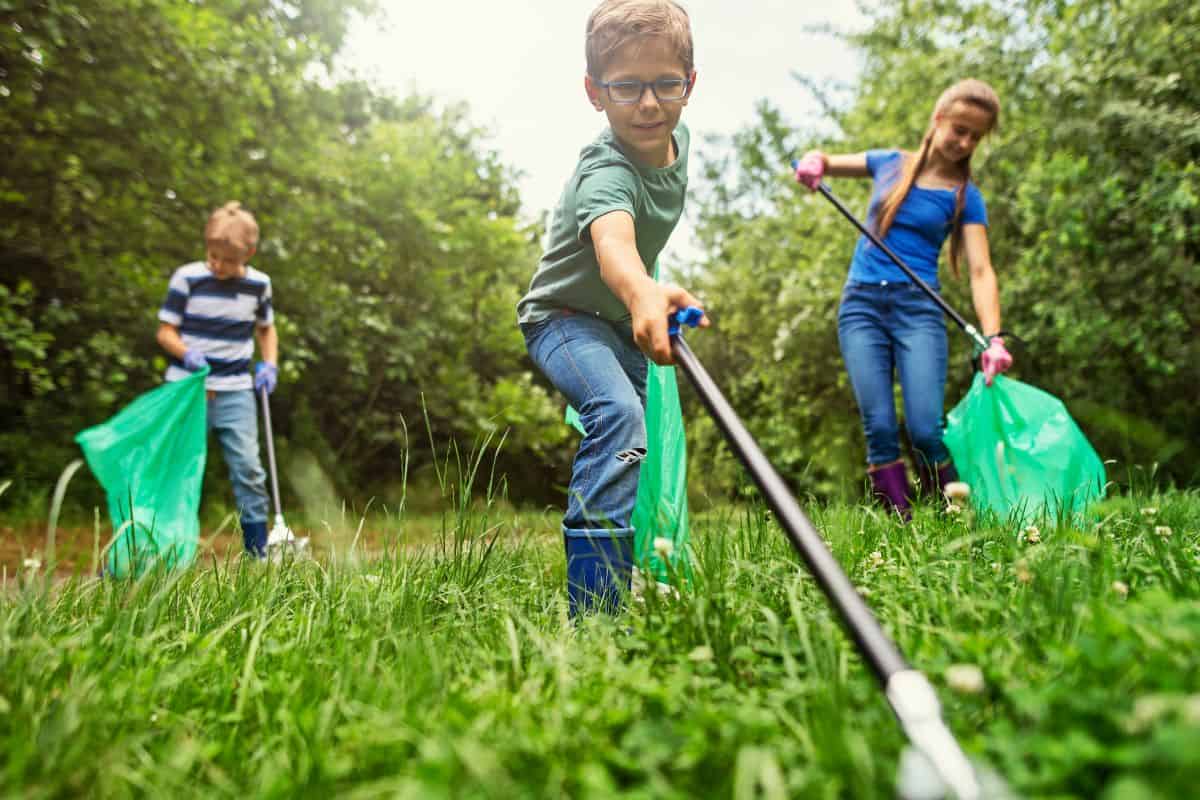
Sustainability activities for kids
There are many ways to get involved in taking care of our planet; whether it’s by participating in local events, volunteering for environmental organizations, or making lifestyle changes that promote sustainability. No matter how you choose to be more sustainable and eco-conscious, we hope you’ll involve your children and teach them about each of our individual responsibility to care for our planet.
Below, we’ve included a huge list of 60+ eco-friendly sustainability activities that you can do with your kids to make an impact. These are great hands-on activities that will help your child connect to the planet and teach them about the importance of sustainability from an early age. But, before we get to the list, there are a few action items that I want to talk about in a bit more detail: picking up trash, the 3 R’s, gardening, Junior Ranger programs, shopping small/local, and getting outside. Each of these things can have a huge impact on our planet and are easy to incorporate into our daily lives.
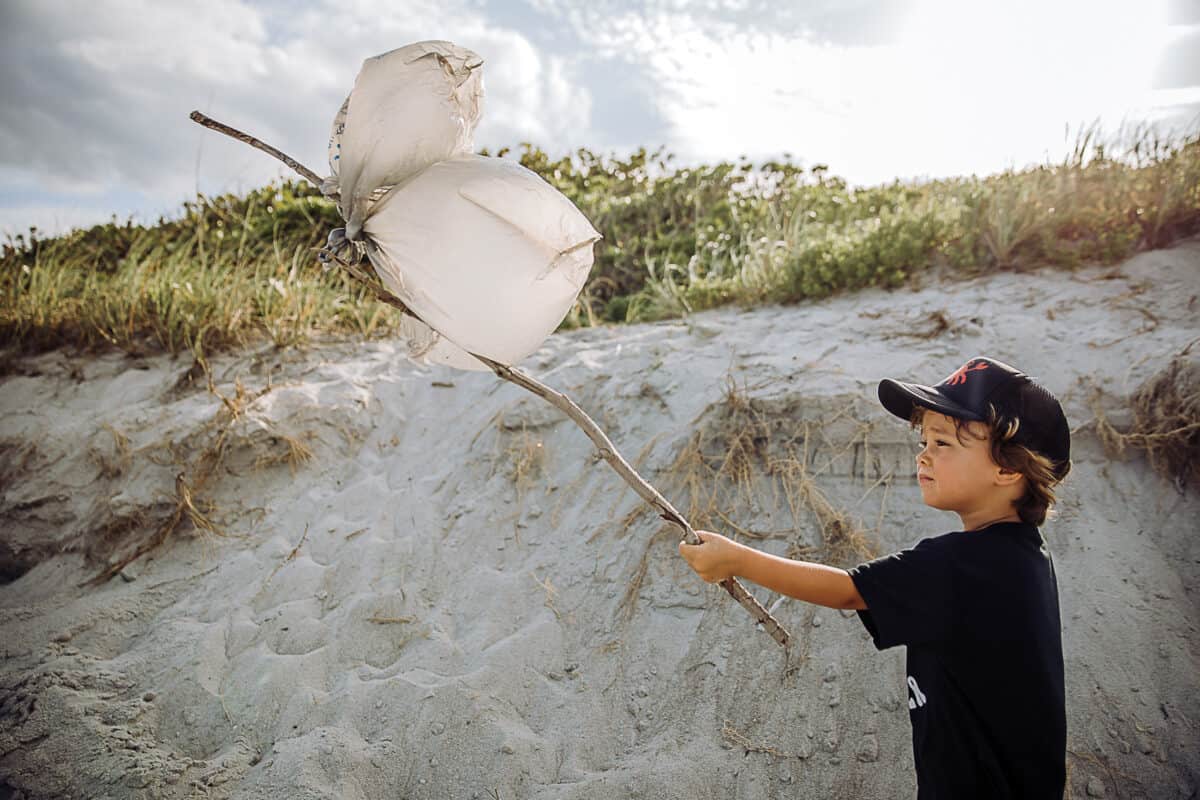
Clean up trash when you’re out and about
Encouraging kids to pick up trash in nature is a great way to teach them about the importance of protecting the environment and its inhabitants. When plastic, glass, and other types of litter are left on the beach, in a river, or anywhere outside, they can harm local creatures, such as turtles, fish, and birds, who can mistake it for food or get tangled up in it.
It is important to help kids understand the WHY behind what you’re doing. Why do people litter, and why is it important for us to clean it up? Talk them through scenarios and what the consequences of our actions (good and bad ones) are. For example, my son found this plastic bag on the beach. We discussed that a sea turtle could easily mistake this for a jellyfish, and he immediately sprang into action. He realized we needed to throw it away so the turtle wouldn’t get hurt. When children understand the why, they make it second nature to help, and they learn to teach others.
We hope you’ll add a clean-up bag to your adventure gear, so you can clean up trash anytime you’re out enjoying nature. This is an easy way to incorporate sustainability actions into your everyday activities. If you want to get more involved in an organized effort, research cleanups hosted by local organizations in your area and sign your family up to participate. By engaging in such activities, it instills a sense of community, responsibility, and stewardship in kids, encouraging them to take care of the planet and its natural resources.
*Adult supervision is always recommended so kids do not pick up anything dangerous.
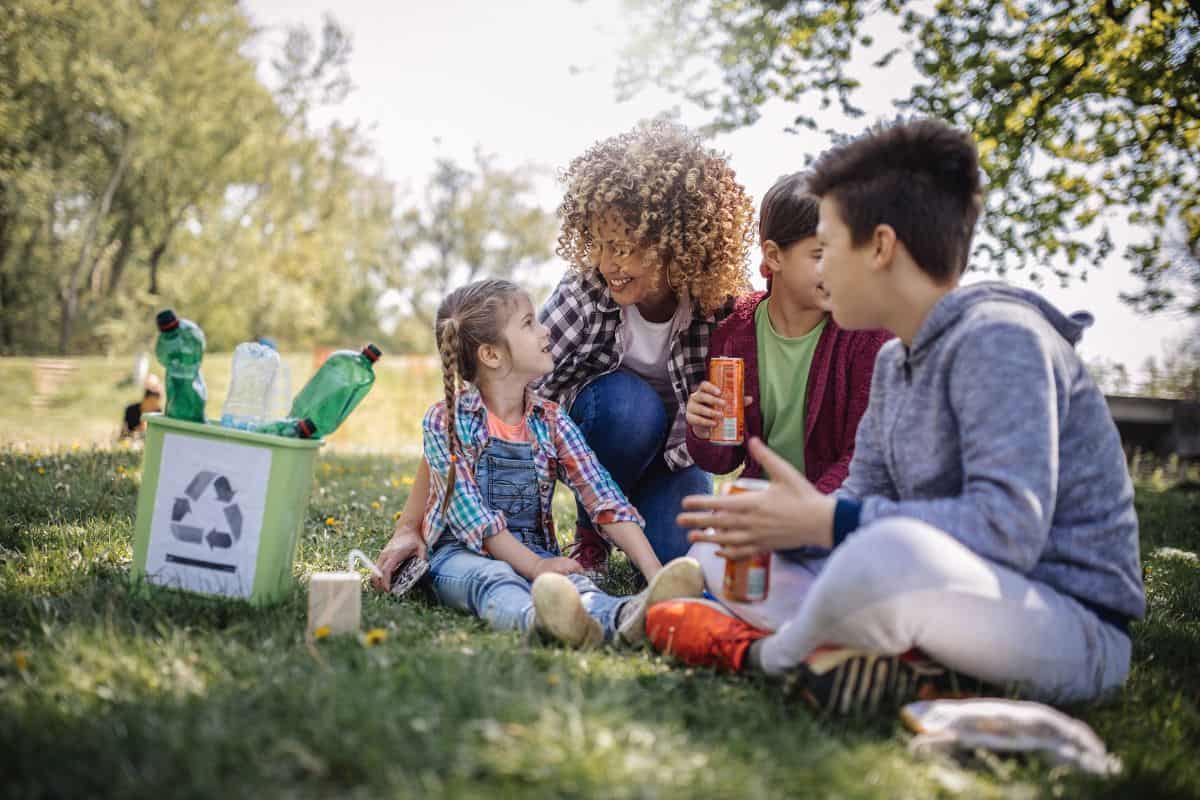
Practice the three R’s at home
Teaching kids about sustainable living is crucial for building a sustainable future. One way to do this is by incorporating environmental education into their daily lives. By now, most people have heard of those three Rs…reduce, reuse and recycle. While it’s a catchy phrase and sounds amazing as an environmental campaign, we’ve relied too heavily on the recycling part, which is not the answer to our trash problems. We need to spend a bit more time also reducing our consumption and reusing what we already have.
Reducing your consumption of consumer items is the very best way to reduce the amount of trash your family sends to a landfill. We cannot recycle our way out of excessive consumerism – we need to buy less stuff. Before purchasing something new, stop and ask yourself these questions: (1) Do I really need this? (2) Do I already own something that can be used in this item’s place? (3) Is purchasing this item worth the environmental costs of resources, production, shipping, and landfill space once it’s been discarded?
Reusing what you already have is the most eco-friendly option of all! And it’s budget-friendly. If you want to put the concept of reusing (or repurposing) items to good use, you might have to get creative! Before tossing something in the trash, think to yourself, “Is there another way I can use this item?” Not only does repurposing mean we get to reduce our waste, but we also find ways to be creative, active, and involved. Kids are super creative and great at coming up with new ideas and ways to use things! Be sure to get them involved.
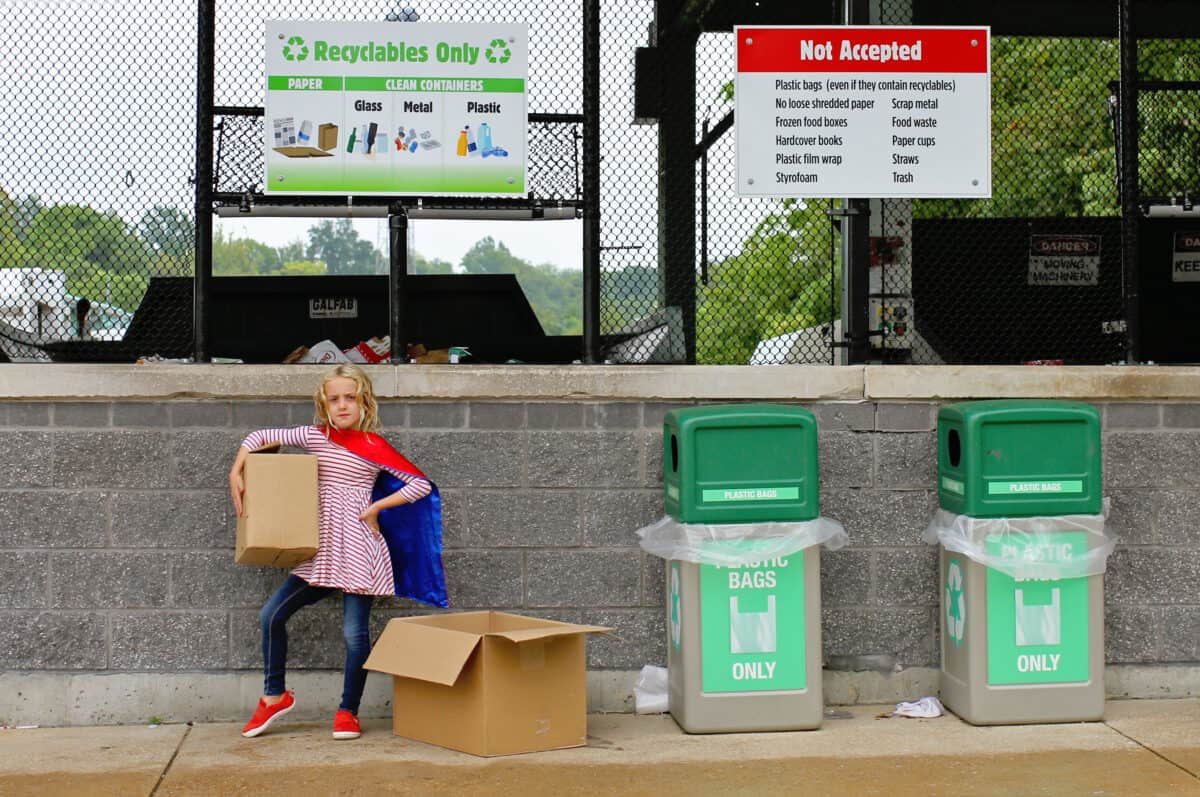 Photo credit: @sara_mccarty
Photo credit: @sara_mccarty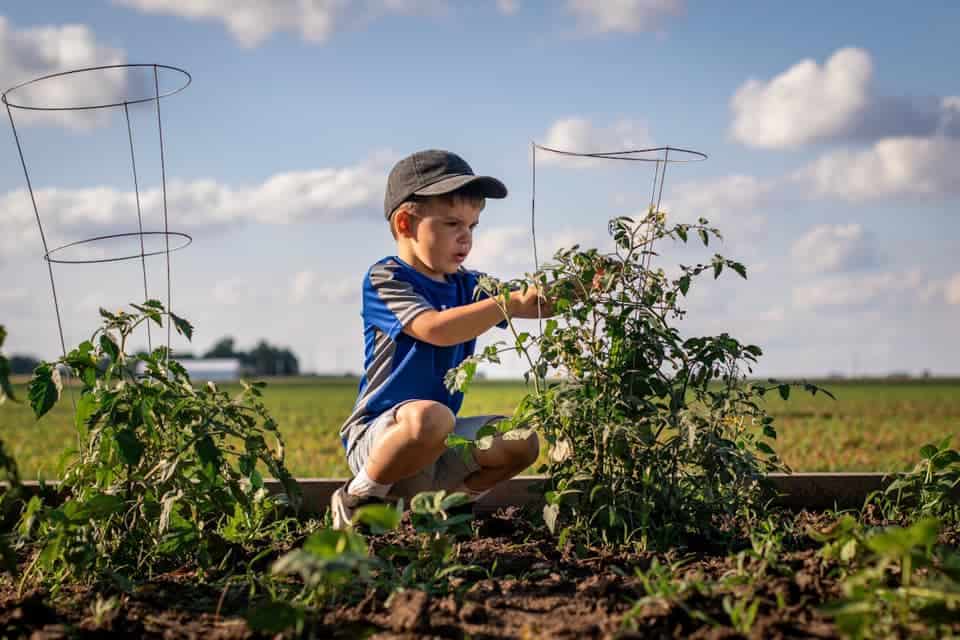 Photo credit: @meghangarriott
Photo credit: @meghangarriott
Gardening
Gardening is another excellent way to teach kids about sustainable living, as it can help them learn about how plants grow and how to care for the environment. By starting and growing a garden, you can teach children about the natural world and where their food comes from. Kids can learn how to plant and care for seeds, how to compost and recycle, and how to use natural methods to control pests and diseases. Gardening is a fun way to help children develop a sense of responsibility and pride in their accomplishments as they watch their plants grow and thrive.
Growing their own food can also inspire children to try new vegetables and fruits, which can lead to healthier eating habits. By teaching kids to grow their own food, we can help them develop important life skills and instill a sense of respect and appreciation for the environment. Gardening can also help reduce food waste and cut down on food packaging waste and transportation costs.
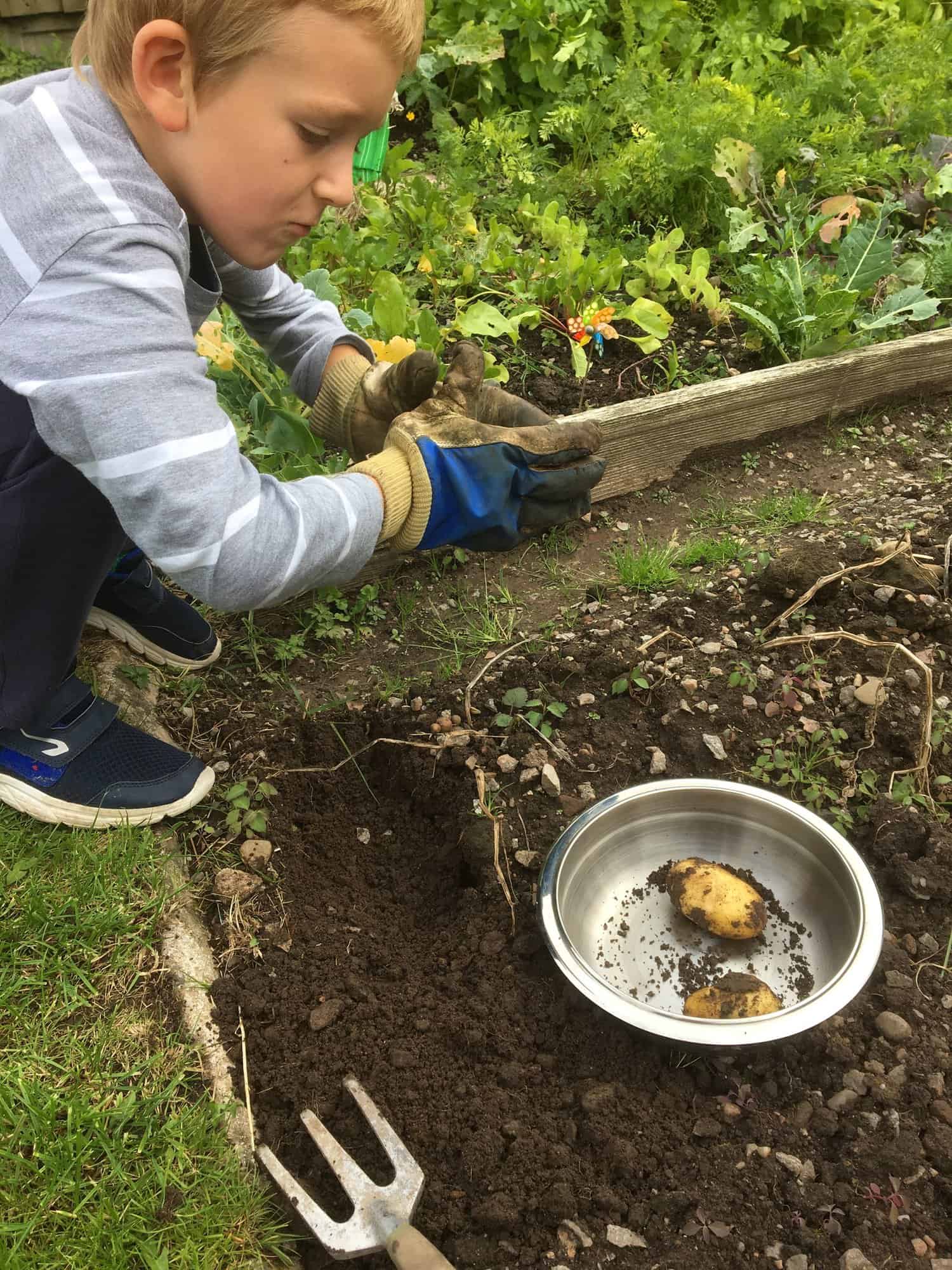 Photo credit: Anna Stopińska-Lewucha
Photo credit: Anna Stopińska-Lewucha
Earn a Junior Ranger badge
Get kids excited about nature at a national park. Visit a national park in your area with your child. Many have activity books to follow while you explore. The Junior Ranger program is a great way to get kids involved in protecting and preserving local parks and natural areas. By participating in this program, kids can learn about the history, wildlife, and ecology of their local park or reserve and engage in fun, educational activities that help them develop a deeper appreciation for the natural world.
The Junior Ranger program offers a wide range of unique and location-specific activities, from guided hikes and wildlife observation to ranger-led talks and interactive exhibits. Through these activities, kids can gain a sense of connection and responsibility to their local environment and learn about the importance of conservation and sustainability. The Junior Ranger program is a fun and educational way to get kids involved in environmental stewardship and instill a lifelong love of nature.
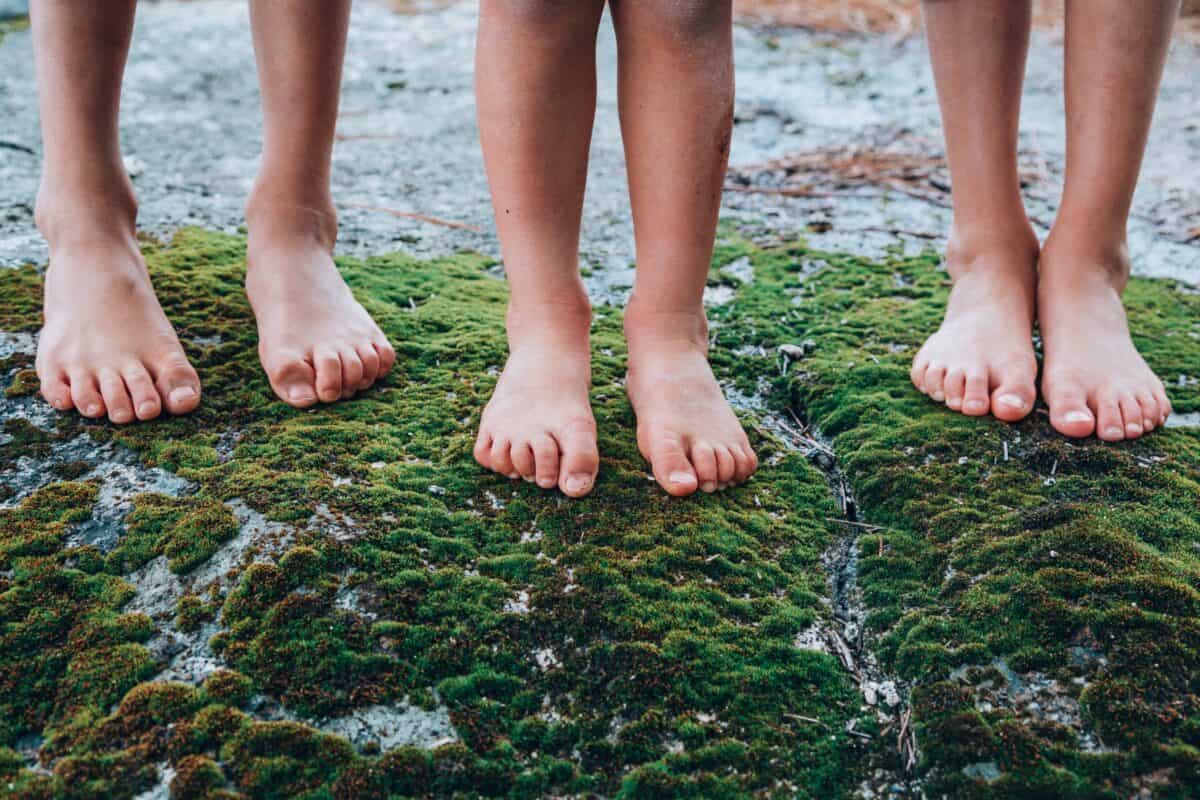 Photo credit: @roaminggonzalez
Photo credit: @roaminggonzalez
Shop small and local
When you shop at small, locally owned businesses, you’re not only making an eco-friendly decision, but one that’s great for your local community. When you purchase at small locally-owned businesses rather than nationally owned, more money is kept in your community because locally-owned businesses often purchase from other local businesses, service providers, and farms. Purchasing local helps grow other businesses as well as the local tax base.
Small local businesses usually set up shop in the town center, providing a centralized variety that is much friendlier to a community’s walk score than out-of-town shopping malls. This generally means contributing less to sprawl, congestion, habitat loss, and pollution.
Teach kids about supporting small businesses. Shop local. Here in Florida, we have kids’ business groups that promote kids with small businesses, such as lemonade stands, and craft stands. It instills responsibility and a sense of pride. This helps to protect the Earth from mass-produced materials and aims to keep our landfills free of trash and waste.
We have recently started a small business that focuses on small batches of beach attire for the whole family. Our son loves helping us design and create our products!
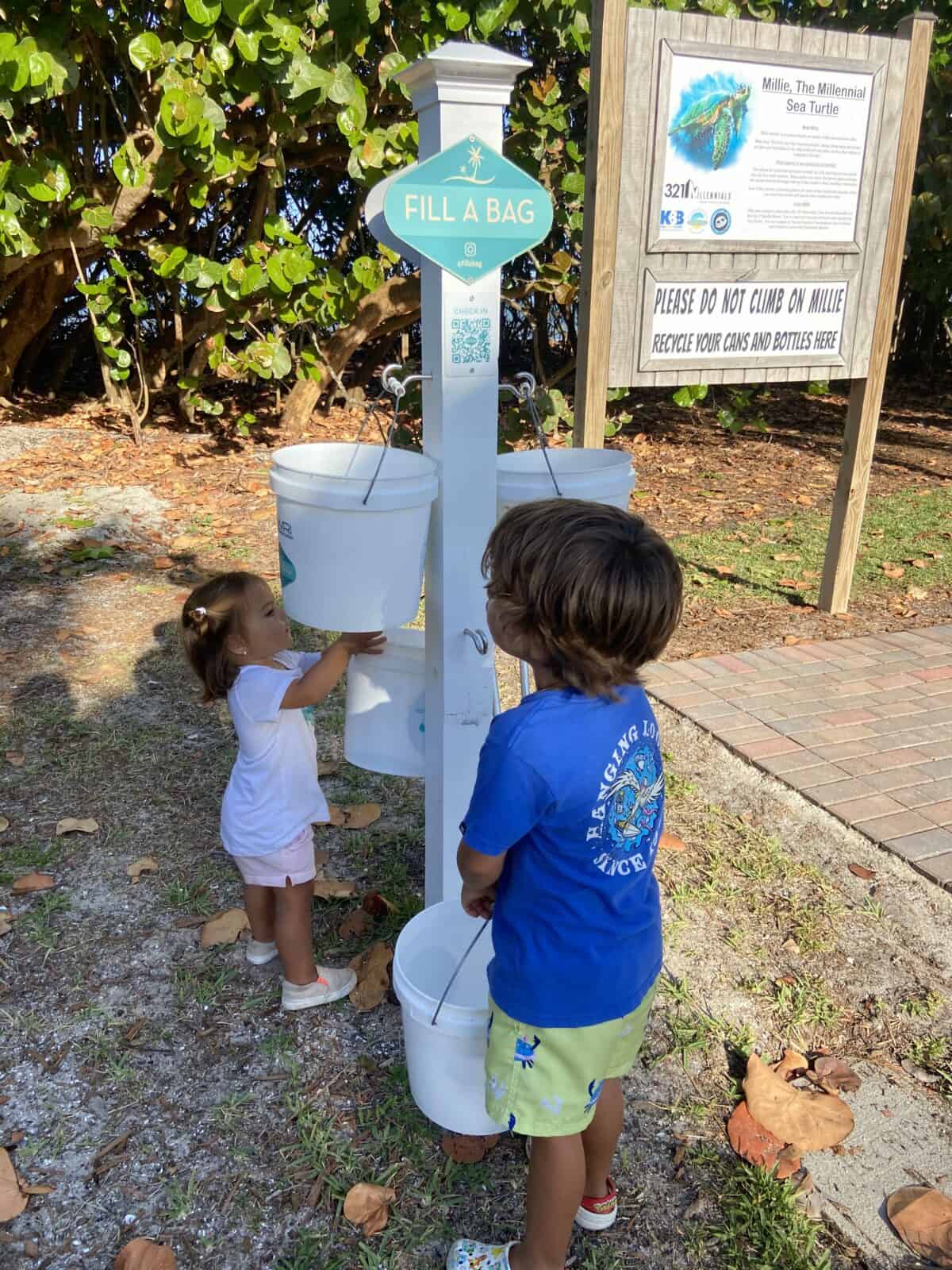
Get outside
Perhaps the single most important thing you can do to make your child aware of the environment and want to protect it is to spend time in it with them. Show them the beauty of our planet and let them learn to love it on their own. Parents can also take their kids to parks, nature reserves, botanical gardens, arboretums, zoos, and other outdoor areas to teach them about the importance of protecting and preserving natural habitats and wildlife.
Need ideas on how to get outside or what to do…check out the rest of our website and sign up to get on our weekly newsletter, which is filled with outdoor activities and ideas!
60+ eco-friendly activities for kids
- Pick up trash at a local park (or on a trail, or in your neighborhood, etc.)
- Set up a scrap paper reusing station in your home
- Use a cloth bag at the grocery store
- Set up a bird feeder (or make a DIY eco-friendly bird feeder)
- Go for a family bike ride
- Play in the water (lake, creek, beach, stream, etc.)
- Start a compost bin (and compost something!)
- Use a reusable water bottle
- Start a nature journal (or add to an existing nature journal)
- Make sculptures, art, or robots using items in your recycling bin
- Plant something (e.g. garden, flowers, vegetables, tree, herbs, etc.)
- Identify a new plant or animal (we love the Seek by iNaturalist app)
- Watch a nature documentary
- Check out books from your local library
- Make your own DIY herbal cleaner
- Attend a local Earth Day festival in your area
- Go on a nature scavenger hunt
- Use a magnifying glass or pocket microscope to view nature close-up
- Go barefoot in the grass
- Create a mandala using items found in nature
- Donate unused seeds to a seed library
- Go screen-free for the day
- Wildflower bomb your yard
- Enjoy a meal outside!
- Visit a little free library (and leave a few books for others)
- Donate gently used clothes/toys/books to charity
- Make a terrarium
- Visit a local farmer’s market
- Recycle something
- Go for a hike (or even just a walk around your neighborhood)
- Forage violets for color-changing syrup
- Make nature crowns (from leaves, flowers, shells, etc.)
- Build a fort in the woods
- Read an educational book about our planet, nature, or wildlife
- Make seed paper cards
- Build an insect hotel
- Turn off the water when you brush your teeth
- Swap out plastic containers for paper products
- Repurpose something you were going to throw away
- Shop local & small businesses
- Visit a national park and earn a Junior Ranger badge
- Eat a meatless meal
- Watch the sunset
- Turn off all lights in your home
- Do a nature-inspired STEAM activity
- Unplug devices you’re not using
- Make your own nature paintbrush
- Build your own rain barrel
- Purchase something second-hand (instead of new)
- Switch out 5 lightbulbs for LED bulbs
- Shorten your shower
- Visit an arboretum or botanical garden
- Carpool to an event/activity
- Grow your own herbs
- Reuse glass jars
- Eat ice cream from a cone (no spoon or bowl to throw away)
- Sign a petition online for climate change
- Donate to an environmental cause
- Write to your congressman about protecting the Earth
- Go geocaching at a local park
- Practice yoga outside with nature poses
- Display your nature finds in your home
- Use no single-purpose plastics all day
- Volunteer
- Visit a refill station for shampoo, soaps, etc.
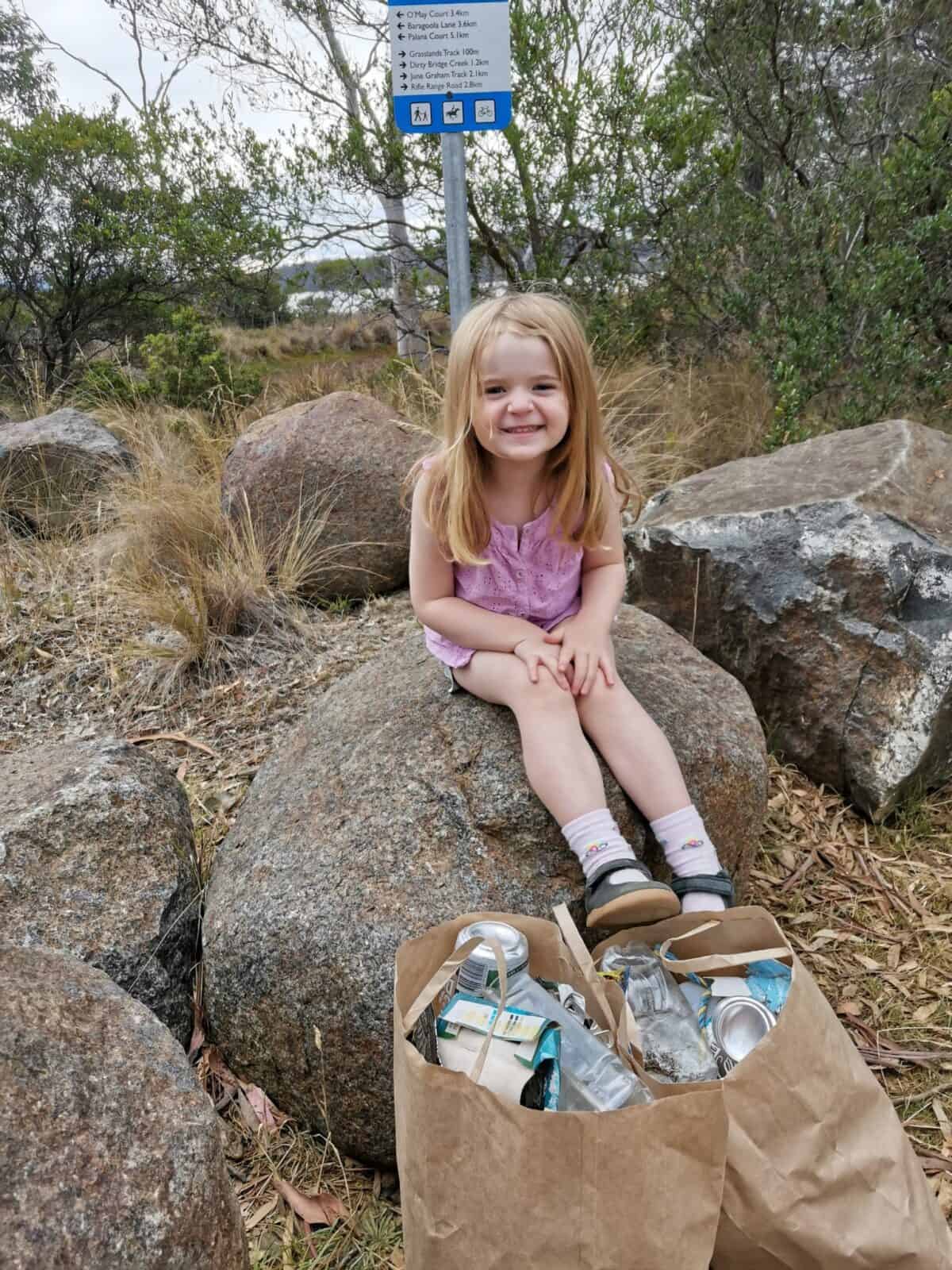 Photo Credit: @tiny.adventures.often
Photo Credit: @tiny.adventures.often
Getting kids involved in protecting the planet
We know there is a lot of room for improvement when it comes to climate awareness, waste reduction, and recycling, amongst other environmental issues. Sustainability is a lifelong journey and one that we need to get our kids involved in. Sometimes the best way to start is, to begin with really small, manageable goals. One thing at a time. Take your time and continue your journey by making the next best choice.
While Earth Day is an important event that reminds us of our responsibility to protect the planet and preserve its natural resources for future generations, it’s not the ONLY time to take care of the Earth. By raising awareness about environmental issues and promoting sustainable practices daily, we can all play a role in creating a healthier, more sustainable world.
Let us take action today and every day to make a positive impact on our planet; it starts now, with us and with our children!
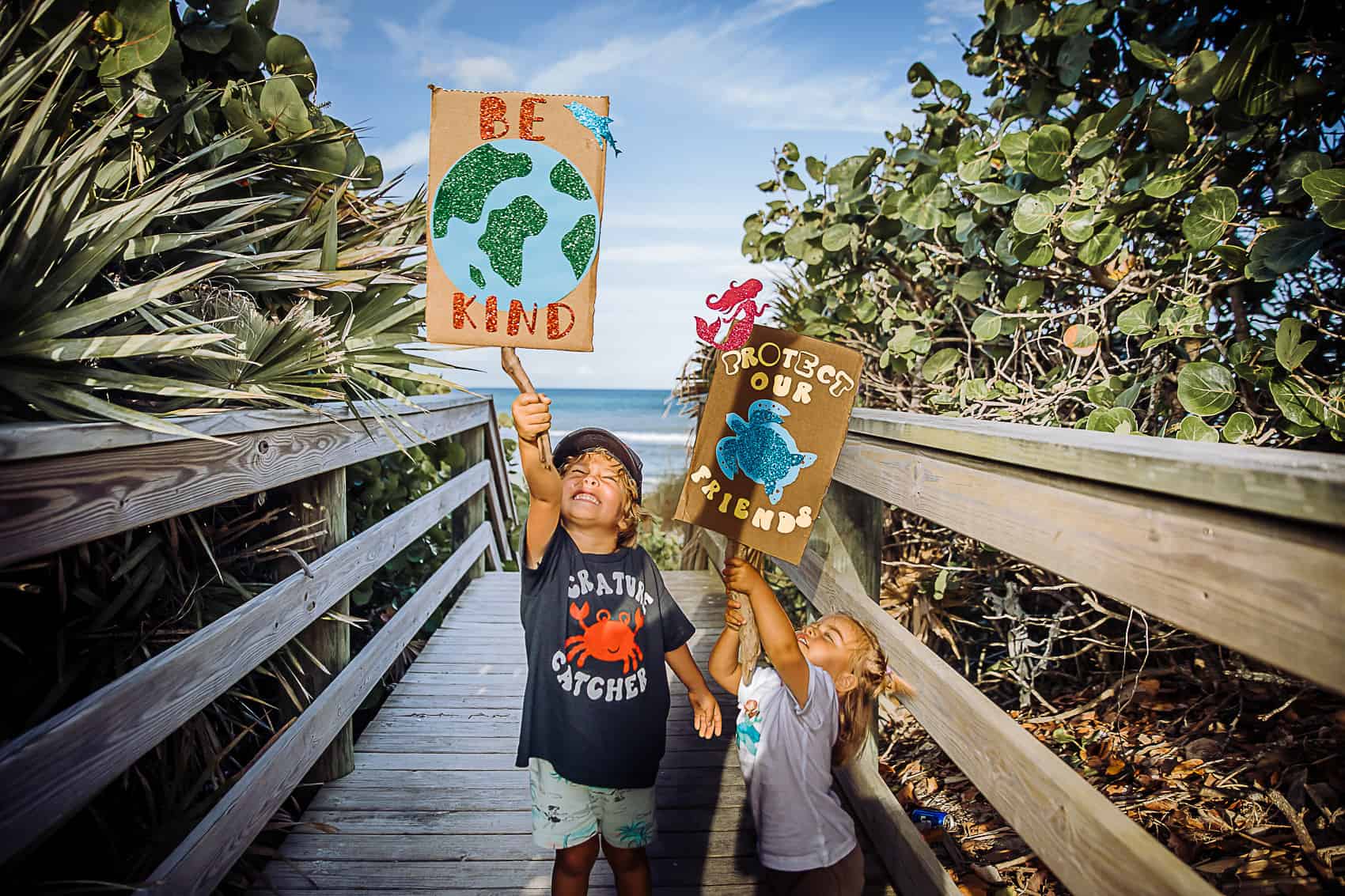
Additional resources
If you’d like some additional resources for learning about sustainability with kids and help with making small (but very important and impactful) eco-friendly changes in your house and life, check out the following:
- Run Wild My Child Sustainability Challenge & Action Guide
- Garbage Collecting & Recycling for Kids
- 15+ Activities to Celebrate Earth Day with Kids
- 20+ Outdoor Acts of Kindness for Kids & Ways to Be Kind to Nature
- Eco-Friendly Holiday Tips, Swaps & Gift Ideas
What are your favorite sustainability activities to do with kids?
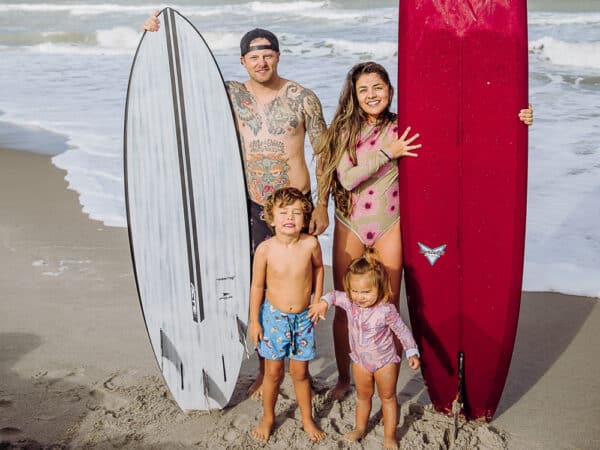
About the author
Lea is a mom of two adventurous kids and wife to her surfer husband Brandon. She is an Army veteran, Registered Nurse, photographer, and small business owner. Lea has lived in Hawaii, New Mexico, and now resides in Florida, where she and her family are enjoying endless ocean adventures. She has traveled to Costa Rica, South Korea, and many states across the US. Lea and her family love to surf, fish, hike, skate, and travel to new places. She is passionate about teaching her kids about nature and protecting our planet.
You can find Lea online in the following locations:
Instagram: @oceanmamalea
Website: Wild Stoke Fam
RWMC posts: Lea Reynolds

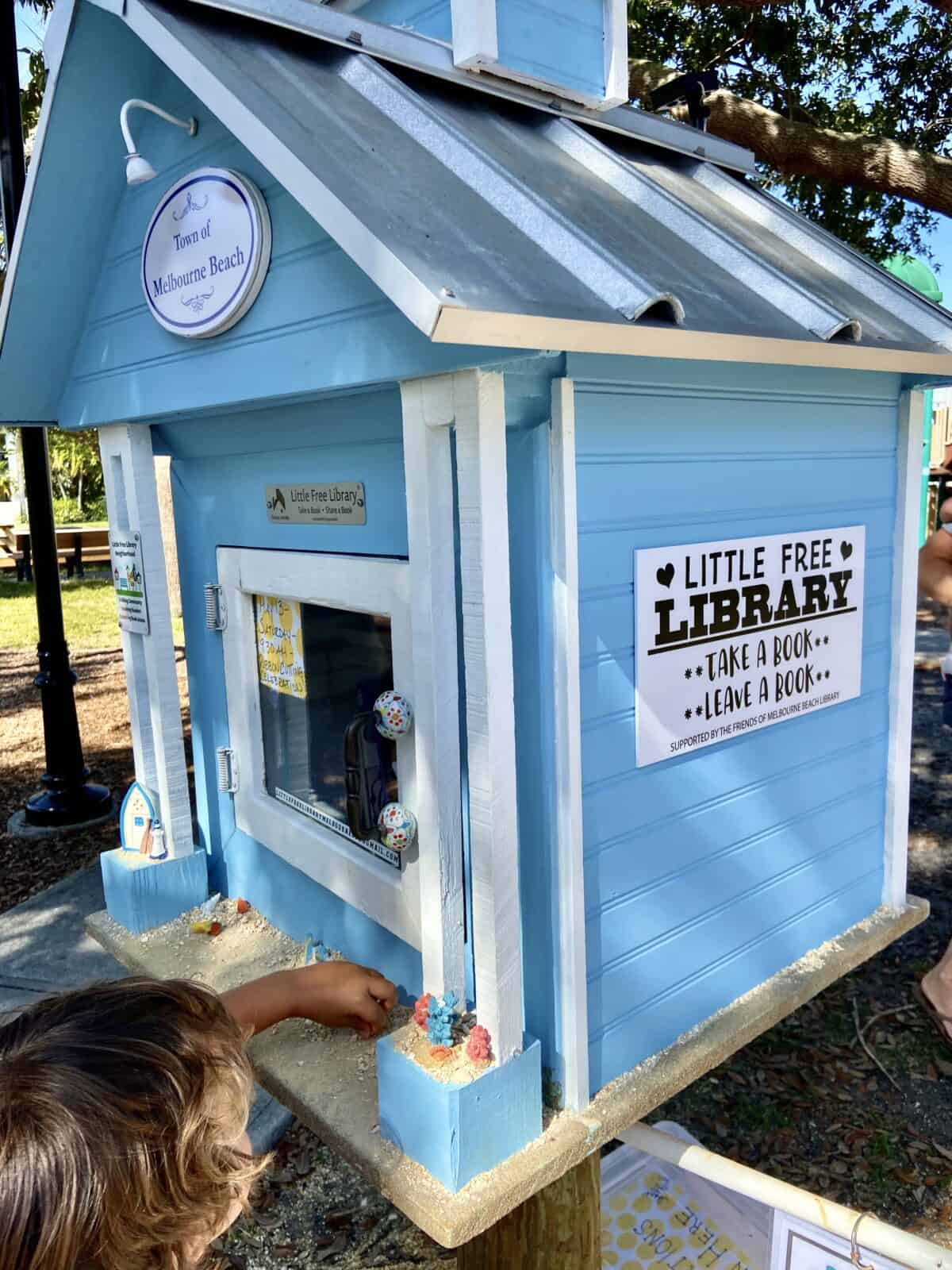







1 comments